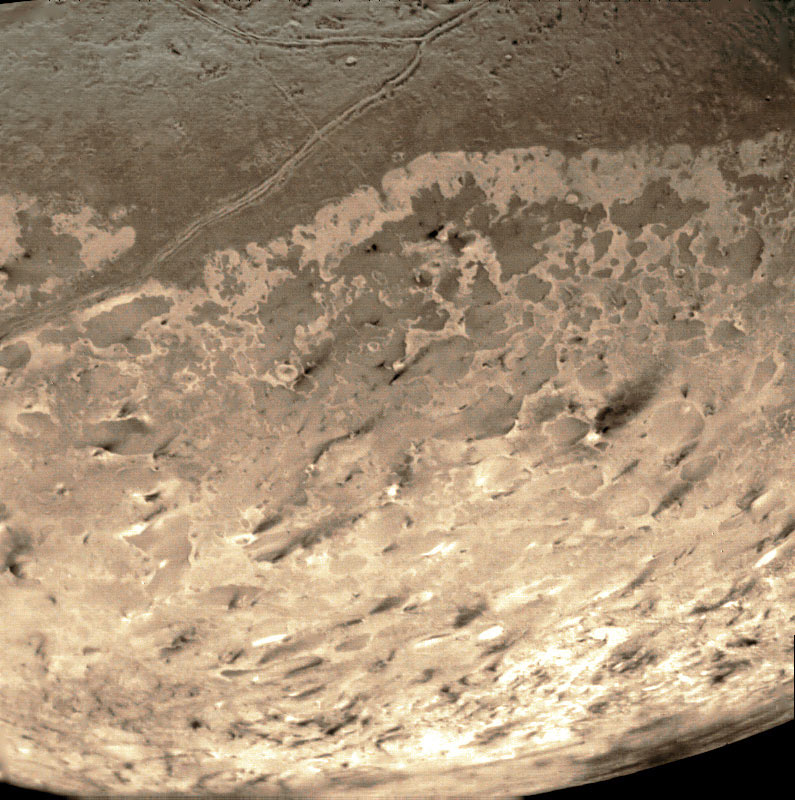Where the geysers on Neptune’s moon, Triton, come from
Triton is a strange moon. It is the only one of the large moons of our Solar System that rotates the wrong way about its planet – Neptune, the eighth and outermost planet. That’s also why it’s assumed that Triton is a Kuiper belt object, similar to Pluto, that was captured by Neptune. On first look, Triton appears very hostile to life – at temperatures close to 0 Kelvin, the atmosphere, which consists of nitrogen, methane, and carbon monoxide, is almost completely frozen, and thus it is very thin; Earth’s atmosphere is 70,000 times thicker.
So, just imagine the surprise of the researchers when NASA’s Voyager 2 probe found something during its fly-by in 1989 that strongly resembled deposits from geysers. Since this phenomenon was known, for example, from Saturn’s moon, Enceladus, and Jupiter’s moon, Europa, immediately there were thoughts of a sub-surface ocean. However, it could also be possible that the geysers are formed when a thin layer of nitrogen and carbon monoxide ice warms up in the summer. Observations made by the Gemini South Telescope of the Gemini Observatory support this hypothesis. Researchers at the Gemini Observatory were able to detect signatures that clearly come from a mixture of nitrogen and carbon monoxide ice, and not from the two types of ice alone. The mixture could also spread across the surface of Triton during the course of the seasons as a function of the incident sunlight.
“Despite Triton’s distance from the Sun and the cold temperatures, the weak sunlight is enough to drive strong seasonal changes on Triton’s surface and atmosphere,” explains Henry Roe from the Gemini research team. Because its planet, Neptune, takes 165 years for one orbit around the Sun, Triton’s seasons are very long. Only Earthlings who are at least 60 years old were around the last time it was winter on Triton. Currently, it’s summertime; autumn rolls in at the end of the 2030s; and at the start of the 2080s it will be winter again. If the geysers are really formed by the summer warmth from the Sun, tourists to Neptune are advised to book their stay on Triton before 2080.


Love your books. So few authors write true hard science fiction these days. You article above is very interesting, but you seem to have a typo where you speak of the temperatures on Triton being close to 0 degrees C. I would think you mean K.
Thanks, Dave! And yes, it must be Kelvin, not Celsius.